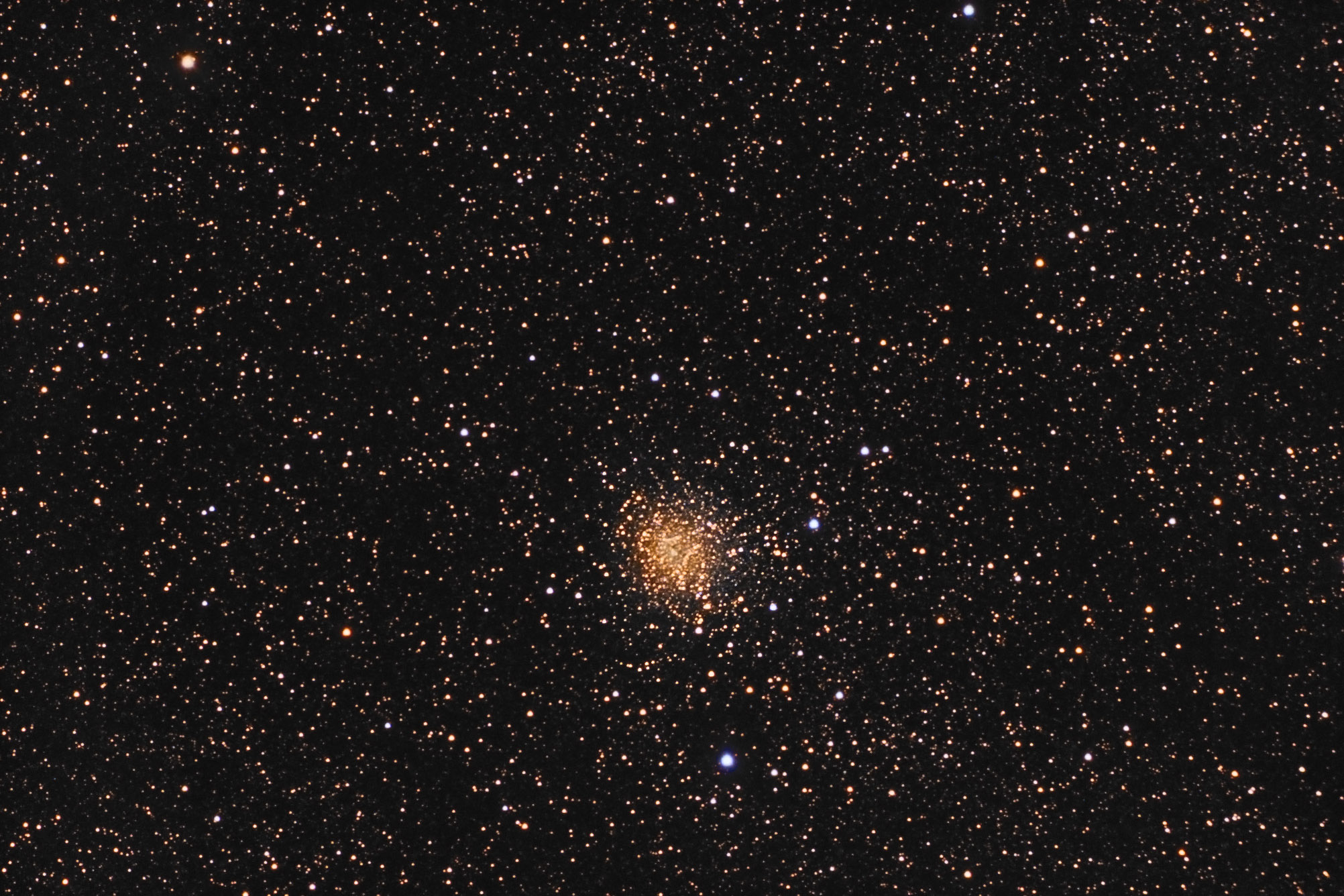| Description | Images |
Object name: NGC6517Designation(s): NGC6517, NGC 6517 is a globular cluster in Ophiuchus about 35,000 light-years distant and about 14,000 light-years from the galaxy's core. Judging by the red star color I assume the area is highly reddened by dust though I didn't find by how much. Its diameter is listed at 4.1 minutes of arc. Using that and the above distance it would be about 42 light-years in diameter. It is listed as class IV. Type I is most condensed and XII the least. For comparison, M13 is class V so less condensed. It certainly doesn't look very condensed in my image. That's because I altered reality. With a standard stretch, the core was saturated showing it was quite dense. But I saw hints of detail so I retarded the stretch of the core region. This brought out three dust blobs near the core I've not seen in any published image of the cluster. I don't know if they are in the cluster or between us and the cluster. This is a very dusty region of our galaxy we look through to see this cluster. |
